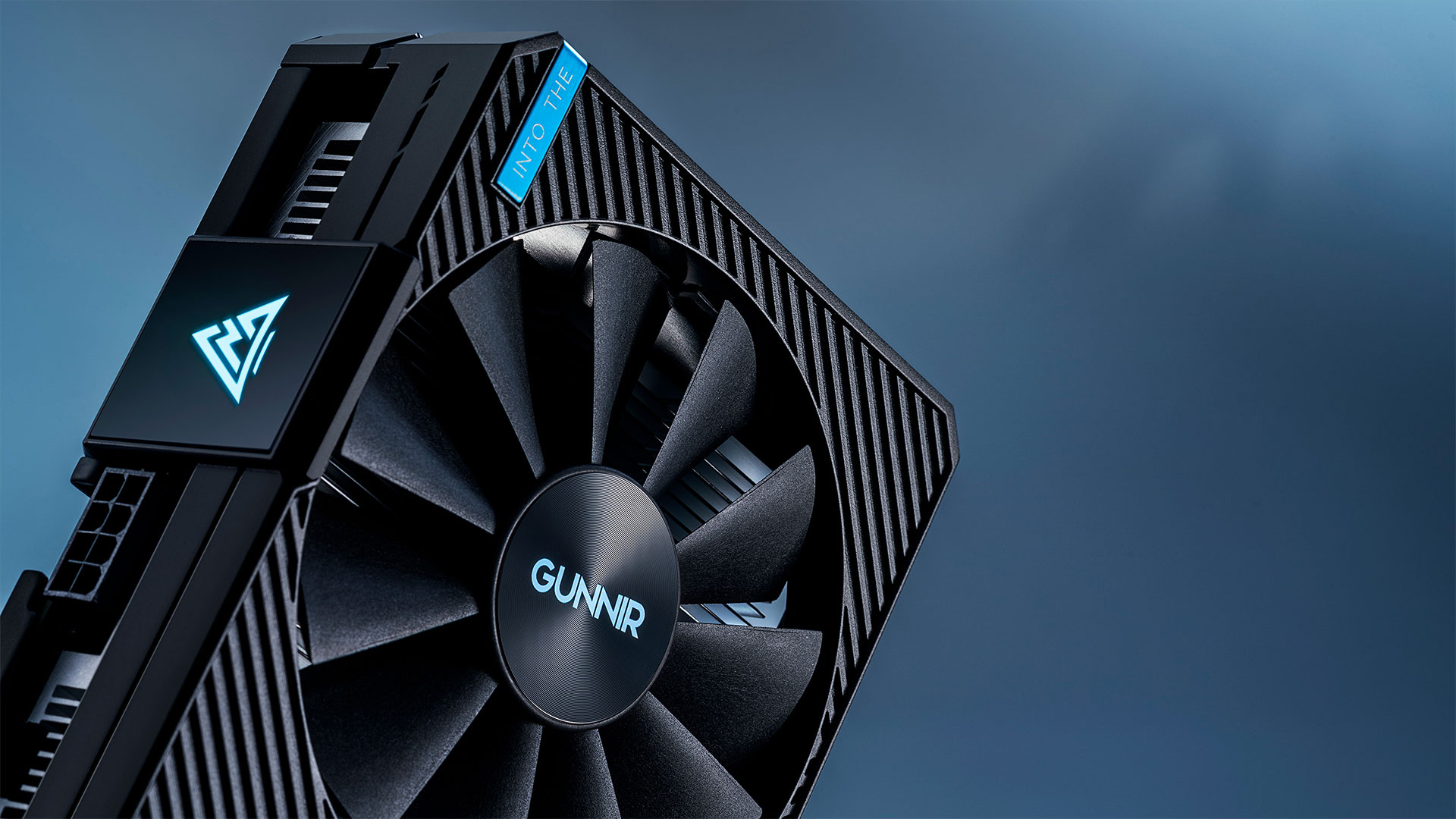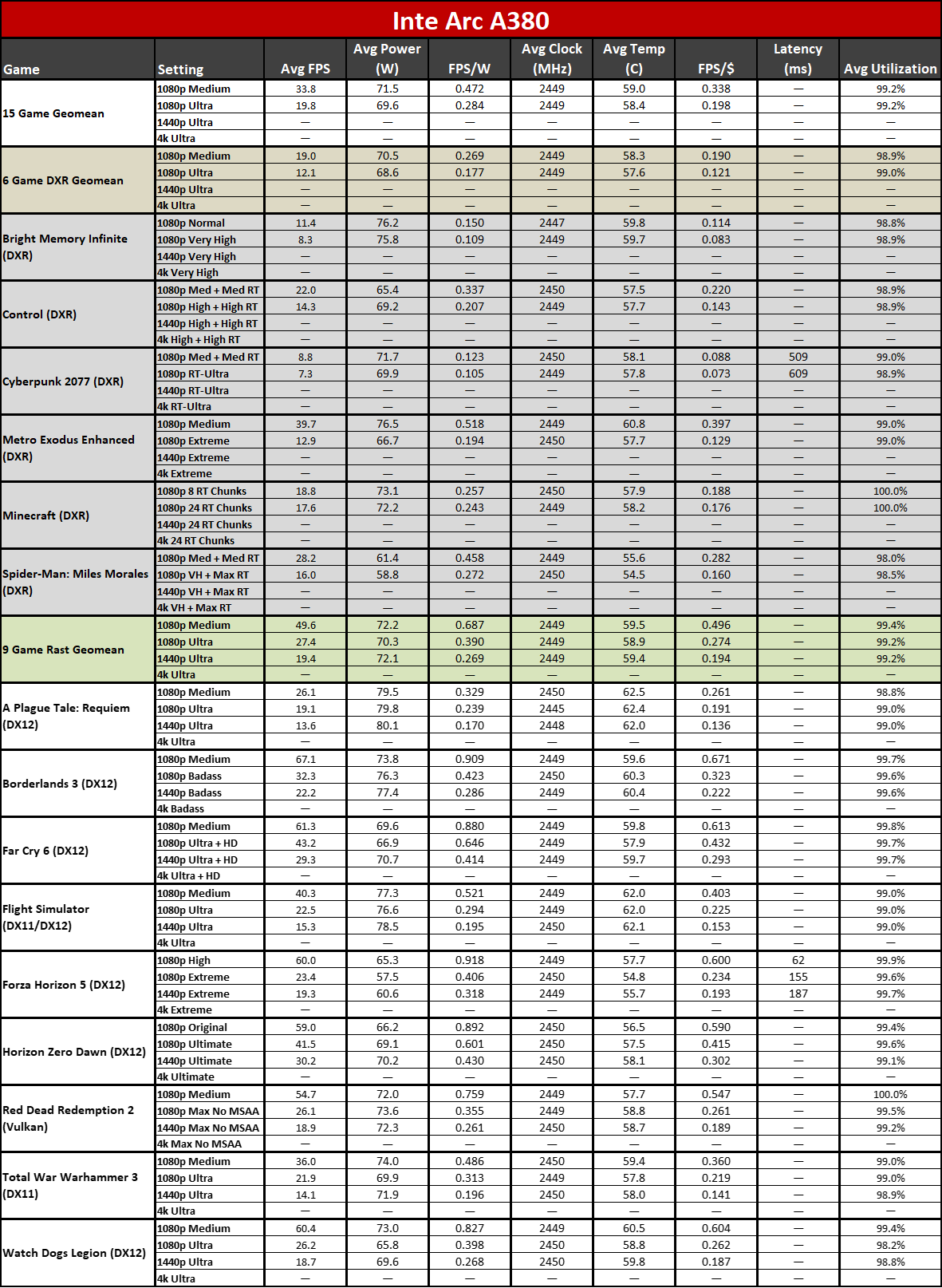Arc A380 Reportedly Gets Extra 150MHz Clock Boost With Latest Driver (Updated)
Intel changed the reported clocks for the Arc A380.

We're accustomed to seeing driver updates that increase GPU performance through game optimizations made at the driver level. This has been especially true with Intel's Arc discrete GPUs, where the company has gained gobs of performance from its latest DX9 and DX11 driver enhancements — allowing GPUs like the Arc A750 to sit in our list of Best GPUs currently.
Update: Intel released the following statement to us and others: "In a recent driver update, we changed the reported graphics clock of the A380. Actual performance and frequency were not affected and we are working on an update to revert the change in a future driver update." The following text has been updated to account for the new information.
Intel's latest driver release (version 31.0.101.4644) changed the reported base clock for the Arc A380. According to a Neowin forum post by Eternal Tempest, the new driver update is bundled with a hidden firmware update for the Arc A380 that boosts GPU clock speeds by 150MHz, going from a flat 2000MHz clock speed by default to 2150MHz with the firmware update. However, it doesn't appear that there was actually any firmware change from what Intel is now saying.
A 150MHz clock speed upgrade is no joke and would be a substantial jump from a mere firmware update. In the world of modern GPU overclocking, getting a stable 150MHz core offset would be a decent result on any of Nvidia's recent GPUs. Most Nvidia GPUs usually top out anywhere between 100MHz to 200MHz on the overclock front, depending on GPU temperatures and silicon quality. Getting a similar increase while remaining within spec would be excellent. But there's plenty of room for questioning what's going on.

We're not sure what prompted Intel to make the 150MHz clock speed change, possibly just an inadvertent modification of the code. Intel has already said that it plans to revert the change in a future driver. But the Intel "Game Clocks" aren't even that meaningful to begin with. The base clock is what Intel guarantees the GPU to run at as a minimum, while the "Game Clock" is a typical (conservative) estimate of where the GPU will land.
The Arc A380 officially launched with a 2000 MHz base clock, with a 2050 MHz Game clock. The boost clock (maximum clock) meanwhile is 2400 MHz. The Gunnir Arc A380 card we used for testing bumps all of those by 50 MHz higher, thanks to a factory overclock — 2050 MHz base, 2100 MHz game clock, 2450 MHz boost clock. Here our the results of our updated testing, showing average clocks under 15 games at three different test settings:

Across the fifteen tested games, virtually every game at every setting ended up pegging the GPU at the 2450 MHz maximum boost clock. The lowest average GPU clock for any test run was 2445 MHz, meaning there were periodic dips from the maximum clock, but not anything you'd really notice in actual gaming.
So, it would be nice to get a free performance upgrade on an existing GPU, no matter where it comes from. But while Intel may have inadvertently changed the reported base clock and game clock for the A380, the actual real-world clocks remain the same. The cards will generally run at their rated maximum boost clock in our experience — and that applies to all Arc cards right now.
Besides the A380 clock speed update, the new driver update also adds game highlights for Madden NFL 24 and Wayfinder. The update also fixes three bugs surrounding a crashing problem in Uncharted: Legacy of Thieves Collection (DX12), a system hang when waking up from sleep mode, and another application crash in Blender 3.6.
Get Tom's Hardware's best news and in-depth reviews, straight to your inbox.

Aaron Klotz is a contributing writer for Tom’s Hardware, covering news related to computer hardware such as CPUs, and graphics cards.
-
RedBear87 Intel's own "fine wine". Let's hope they'll get more stuff right from the beginning next time, the market desperately needs some actual competition.Reply -
Eximo Huh, well the ASRock Challenger model (pretty much the only one available in the US) is clocked at 2250Mhz already, so which cards does this apply to?Reply -
OG_GamerZ Reply
The ASRock Challenger is or was Clocked a 2000 now 2150 whatever they did to it I'm running Immortals Fenyx Rising 2560x1440 40+ FPS Maxed out and other games I couldn't run at that res I now can something changed in that card, and it was an amazing one.Eximo said:Huh, well the ASRock Challenger model (pretty much the only one available in the US) is clocked at 2250Mhz already, so which cards does this apply to? -
Eximo More likely driver optimization than frequency changes in your case.Reply
As sold, 2250Mhz. https://www.asrock.com/Graphics-Card/Intel/Intel%20Arc%20A380%20Challenger%20ITX%206GB%20OC/
I have one, but I don't use it for gaming so much, just experiments and media playback. My test platform to see if I will jump on Battlemage when it comes out.
The only ASRock 2000Mhz version was only recently released and is the low-profile one that doesn't require external power.
I don't think the Intel card was ever sold in the US, and we also only recently saw Sparkle and Matrox start selling Intel cards. Acer sells only the large cards.
I may install that driver later and see what happens, would be annoying if it downclocked it to 2150Mhz. -
OG_GamerZ Reply
Na bro I see what you're saying but it's an ITX card with a 6-pin connector i got it at launch on Newegg 2000mhz is it.Eximo said:More likely driver optimization than frequency changes in your case.
As sold, 2250Mhz. https://www.asrock.com/Graphics-Card/Intel/Intel Arc A380 Challenger ITX 6GB OC/
I have one, but I don't use it for gaming so much, just experiments and media playback. My test platform to see if I will jump on Battlemage when it comes out.
The only ASRock 2000Mhz version was only recently released and is the low-profile one that doesn't require external power.
I don't think the Intel card was ever sold in the US, and we also only recently saw Sparkle and Matrox start selling Intel cards. Acer sells only the large cards.
I may install that driver later and see what happens, would be annoying if it downclocked it to 2150Mhz. -
Darklegion1978 The Article is great, but no one, also the Author not, have checked the real Clock Speed of the Asrock Cards!Reply
And yes, its an Asrock Card, and not an original Intel Card. ;)
All Asrock Cards are OC Cards and the normal Clock Speed should be higher then a "normal" Intel Card.
Till today, Intel dont show and use the OC Speeds of the Cards.
A380, A770 from Asrock are all working with 2000MHz and 2100MHz, and not with its OC Speeds.
Glad to see, that the A380 from Asrock comes a little closer to its original Speed that she has. ;)
Pls, for future Articles, take a better look at the different Models and Specs ;)
Greetings Dark -
Eximo ReplyOG_GamerZ said:Na bro I see what you're saying but it's an ITX card with a 6-pin connector i got it at launch on Newegg 2000mhz is it.
8-pin on the model I have. I also bought it at launch, perhaps a regional difference?